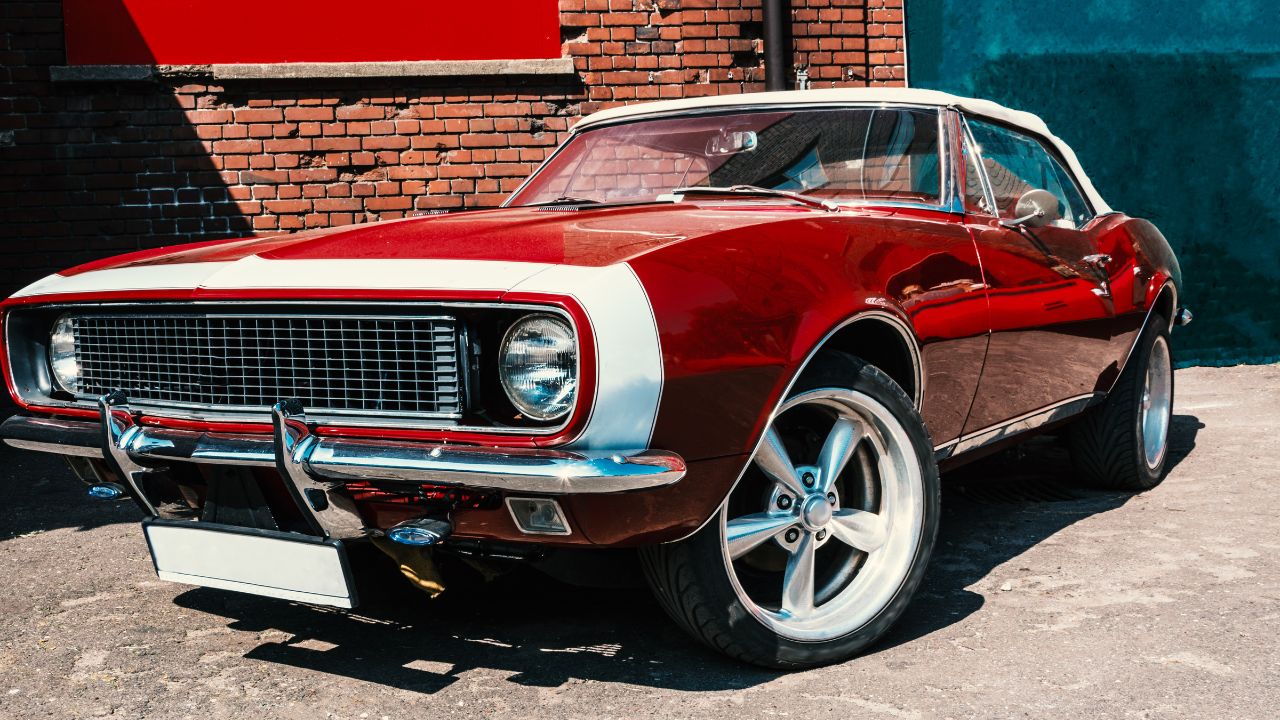
The '90s was a great decade for cars, and collectors of '90s cars are finding many items to buy. This article will show you some of the hottest vehicles on the market, from the Ford Escort RS Cosworth up to the Toyota Supra. We'll also examine the Ford F-150 SVT Lightning as well as the Honda NSX. These cars will inspire you to drive, regardless of the price.
Ford Escort RS Cosworth
Ford Escort RS Cosworth (WRC homologation) is a very rare special. It was created in the mid to end of the 1990s with the intent of showing Subaru what they are missing in World Rally Championship. The original Escort RSC Cosworth produced 210 horsepower and cost $186,000; however, many enthusiasts have taken to the car to restore it and make it more affordable.
The Escort RSC Cosworth was originally made for rallying but it was also available as a road-going vehicle. Although the Escort RS Cosworth cost a lot, its performance is unmatched. The car was so powerful that insurance premiums were exorbitant. This car was notorious for turbo lag and it was extremely expensive. It was still sold in large numbers, with more than 7000 units. It's a collector's favorite.

Toyota Supra
In the 1990s, the design of Toyota Supra was drastically altered. Its interior was updated to incorporate new colors, including dark and shadow grays, and the steering wheels were redesigned. The dash was given a new look with larger speakers and a larger cover for the center speaker. The center of the steering wheel was also given an airbag. A four-spoke steering rod with Supra script was created to replace the original three-spoke wheel.
The Toyota Supra has many distinctive features that set it apart from its contemporary rivals. A new body style was developed for the fourth generation Supra. The old pop-up headlamps had been replaced with LED units. The rear wings were made optional. This was the Supra's trademark feature. This Supra was, unlike its modern counterparts in power, more powerful than the predecessor. The turbocharged engine can still produce more power than the predecessors.
Honda NSX
The Honda NSX remained largely unchanged for over a decade. The 2001 model saw a few cosmetic modifications, including a new chassis with fixed xenon lights. There were also improvements to the suspension as well as larger tires and wheels. The car was also available in a variety of colors, and owners could choose a matching interior color. The NSX was not able to live up the hype it got from its fans.
Honda NSX was prone to oversteer during cornering maneuvers and at high speeds due to its mid-engine configuration. Honda introduced the Type R, and Type S to correct this issue. These cars were stronger and heavier than their predecessors. The Type R, Type S and Zero versions had a Zero model, which didn't have a navigation system or AC.

Ford F-150 SVT Lightning
The Ford F-150 SVT Lightning, a luxury pickup truck made on the second-generation body design in the 1990s, was called the Ford F-150 SVT Lightning. It came with a naturally aspirated 5.4-liter V8 engine and an Eaton supercharger. The engine produced 360 horsepower as well as 440 lb-ft torque. It was supported by a 4R100 auto transmission. Lightnings in their first generation weren't available from the factory, but they were an option. The second generation model featured a tubular lower-grille, coil springs on the front, a leaf package in the back, and 31mm anti-roll bars.
The first-generation truck had twin beam coil springs at the front and leaf springs in the rear. The truck was available with Monroe Formula GP shocks as well as a stabilizer in the front or back. The lowered truck had a ground clearance of one inch up front and 2.5 inches in the back. This truck was ideal for anyone looking for power and speed in a small truck.
FAQ
Is it worth becoming a mechanic?
This question is dependent on your life goals. If you are looking to make money, then yes. But if meaning and purpose is what you seek, then no.
If you don't have any mechanics skills, then there's no point getting into it because you'll just end up wasting time. You won't become rich from it. It won't make your name famous. It is unlikely that you will be made famous.
It would take you years to learn how to do everything correctly. It would be expensive to have your car fixed by someone else. It's the reason most people don't bother. They find something they enjoy instead.
You can make a lot of money if you are looking to do well. But if you want to live a meaningful life, stay away from the mechanic's industry.
Is it possible to work as an automotive mechanic?
It can be done. Many garages have vacancies that are advertised online. Many people apply because they think it will be fun. Applying for several positions and seeing if they accept student applications is a good way to get your foot into the door. Another option is to ask family members and friends if anyone works in this industry. They may be happy to recommend someone.
What are the qualifications for an automotive technician
You must have completed high school or GED with good grades in maths and English. You must also be able to read, and write. The written test will be passed and you will then have to take several practical exams before you can begin work.
Statistics
- According to the BLS, the median annual salary for automotive service technicians and mechanics in the United States was $44,050 in May 2020. (uti.edu)
- The U.S. Bureau of Labor Statistics (BLS) reports that the job outlook for automotive service technicians and mechanics is expected to decline by 4% from 2019 to 2029. (indeed.com)
- 52% of Mechanics in the United States think their salaries are enough for the cost of living in their area. (indeed.com)
External Links
How To
How to Become an Auto Technician
An automotive technician performs repairs and maintains vehicles. He/she works in car dealerships as well as auto shops, garages, and service centers. He/she assists customers in fixing their cars, trucks or motorcycles. An automotive technician must have the ability to quickly diagnose and fix problems.
An associate degree should be obtained from a vocational school if you wish to work as an auto technician. After completing this program, he/she must pass the National Institute for Automotive Service Excellence (ASE) certification exam. ASE stands as American Society of Mechanical Engineers. There are two parts to the ASE certification exam. One section tests mechanical knowledge; the second section tests practical skills. To take the test, you must visit one of the approved testing locations. These locations can be found online or at your local auto dealer.
After passing the exam, a candidate must take a state exam before being licensed as an automobile technician. The process will vary depending on where an applicant lives. Some states require applicants to take a training course while others allow them the freedom to study on their own. Some states allow technicians to become licensed right away after receiving their license. While others wait until they have had at least six years of experience as an automotive technician.
Apply to your local dealership to become an automotive technician. Most employees who are hired start as apprentices. Apprenticeship programs typically last three to four years. The apprenticeship program teaches students how to change oil, adjust brakes, replace tires, clean spark plugs, inspect engine compartments, and perform routine maintenance. Some students learn how to do advanced repairs, such as installing air filters, replacing shocks, repairing engines, and replacing transmission fluids. Most schools offer classes during regular business hours. Some schools offer evening classes, however.
When a student has completed his/her apprenticeship, they become a journeyman. Journeymen usually spend four to five year learning how to install major systems like transmissions, differentials steering gear, suspensions, drive shafts, and steering gear. They also learn to perform complex repairs, such as remanufacturing engines, rebuilding transmissions, and troubleshooting electrical components. Many employers prefer to hire Journeymen because they understand the job well.
Once a candidate passes the required exams and is granted a license, they might consider opening their own shop. According to the Bureau of Labor Statistics, nearly 1.7 million automotive mechanic jobs were available in 2010. That number was expected to grow by 18 percent from 2009 to 2020. Candidates who decide to open their own business should be prepared to invest thousands in equipment and supplies.
There are many factors that affect the salary of an automotive technician, such as where they live, their education and experience. A jobless person can expect to make $20,000 per year. A person with only a high-school diploma could make around $21,000 annually. Those with an associate's degree earned approximately $24,000 per year. Technicians with bachelor's degrees earn approximately $27,000 per year. A master's degree earns around $32,000 per a year. Salary increases can be common. A professional who earns less that $30,000 today could reasonably expect a $40,000 increase in the next few decades.